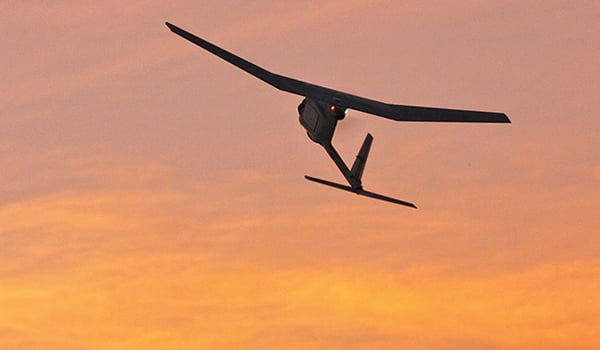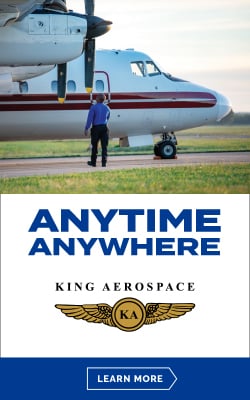
AMRDEC Tech Talk / By Mr. Dan H. Beck: It is difficult to keep up with how to legally operate a small unmanned aircraft system (SUAS). It is one of those subjects that you might get several different answers on what is legal and what is not.

An RQ-11 Raven hand-launched remote-controlled unmanned aircraft system. / AMRDEC AED PHOTO
I am going to step through a couple of different scenarios that will help explain the Army rules, Federal Aviation Administration (FAA) rules and how they should be applied to your operations.
Definition
First off, let’s talk about SUAS basics. All Army owned SUAS are required to meet basic Army regulations and requirements regardless of how small the aircraft may be. An Airworthiness Release (AWR) is required along with other processes including risk acceptance and training. The most widely recognized definition of a SUAS is an unmanned aircraft under 55 pounds. Within the military, we use five different groups to categorize UAS. The groups exist to identify UAS capabilities, not to address regulatory requirements. Group 1, less than 20 pounds, is generally what we consider a SUAS for the Army.
Airspace Rules
If you are operating Army Aircraft outside of restricted airspace, there are many rules you should know before starting operations. I’m going to address a few, but you should speak to your U.S. Army Aeronautical Services Agency (USAASA) Department of the Army Representative (DAR) for more information. First and most importantly, you are required to have someone watching the aircraft for collision avoidance at all times. All operations outside of restricted airspace also require a Certificate of Authorization (COA) from the FAA. The COA process can be completed in 48 hours or up to 60 business days depending on the type of airspace you request to fly in. Class G airspace is pretty easy as long as you are not flying over populated areas. As you move up in airspace class, the process becomes a little more difficult, but not impossible. Operations inside restricted airspace require approval of the range commander.
The first scenario is a kid out flying a DJI Phantom quadcopter that was bought at the hobby store. Believe it or not, they have to register with the FAA to operate their new toy around the yard at home. There are a few rules governing airport proximity and altitude restrictions, but the process is pretty painless and only costs $5 to register online. Everything changes if “The Army” were to buy the exact same quadcopter. It would then be considered an Army aircraft. It is also considered a state aircraft at this point and will require a COA from the FAA for each location it is going to be flown.
There are advantages and disadvantages to operating a SUAS as the military. The Army doesn’t have a standard altitude restriction, is not restricted to daylight only operations, and we have access to areas that are not publicly available. The biggest disadvantage is that we are required to have a COA in place for every location for flight operations. There are ongoing efforts to relieve some of these requirements and hopefully the military will have a more flexible clearance to operate in the future.
Another unique scenario is the U.S. Army Corp of Engineers (USACE) operating SUAS all over the country in support of mapping, levee/dam monitoring, and disaster relief operations. In each of these cases a COA is required along with all of the Army requirements. The key to the USACE’s success is a very solid process that happens in the background. They have standing SOPs, risk assessment processes, and Airworthiness Releases (AWRs) on their aircraft for each location. The biggest hurdle the USACE had to overcome is the requirement for a Proper Use Memorandum. This memo is required for any Army UAS operations outside of restricted airspace to prevent misuse of aircraft and “spying” on the general public.
The last issue I want to address is the new FAA Rule for SUAS. FAR Part 107 is for commercial SUAS under 55 pounds to operate in the National Airspace System (NAS). Civilian processes don’t apply to Army aircraft. Some users that fit into this category that are similar to the military are police, fire departments, search and rescue, other civil entities that may need to operate SUAS.
Mr. Dan H. Beck is the chief of the UAS Airworthiness Branch, Aviation Engineering Directorate, U.S. Army Aviation and Missile Research, Development, and Engineering Center at Redstone Arsenal, AL.





















